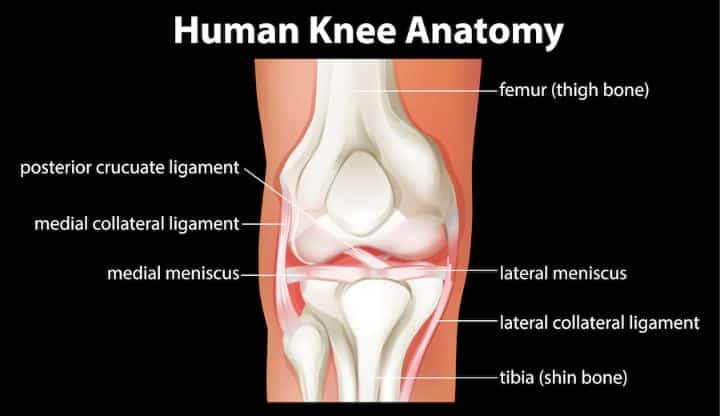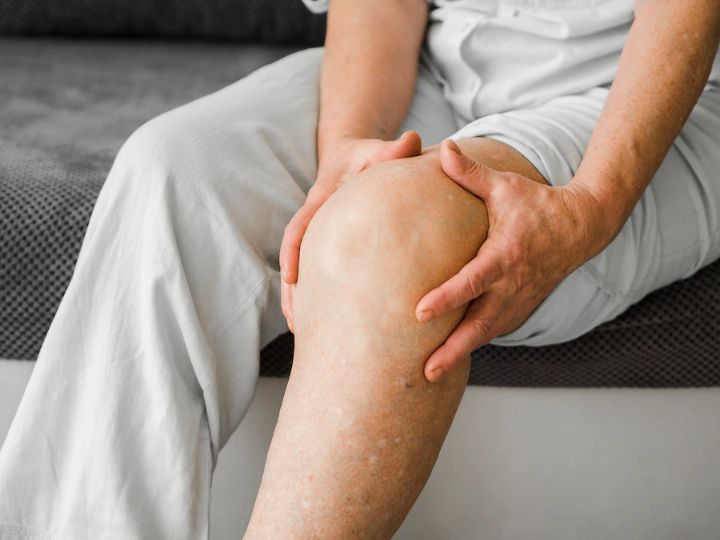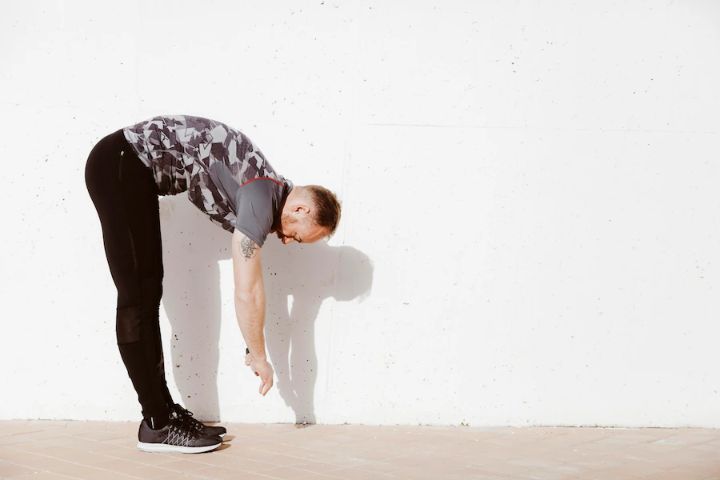Medial collateral ligament (MCL) injuries are a common type of knee injury that affect many Australians. Whether you are an athlete or simply someone who has experienced a fall or impact to the knee, MCL injury can cause pain, discomfort, and instability.
The medial collateral ligament (MCL) is a crucial ligament that connects the thigh bone to the shin bone. It is located on the inner side of the knee and helps to stabilize the joint. MCL injuries occur when there is damage or a tear to the ligament, which can result in pain, swelling, and instability in the knee.

Photo Credit: brgfx
MCL injury is commonly seen in athletes and individuals participating in high-impact sports such as football, basketball, and soccer. They may also occur due to direct impact or trauma to the knee, sudden twisting movements, or overuse.
There are three grades of MCL injury:
It is essential to seek medical attention if you suspect you have an MCL injury, as the correct diagnosis and treatment plan can help to prevent further damage and speed up the recovery process.
Medial collateral ligament (MCL) injuries can occur for various reasons, including direct impact to the knee, sudden twisting movements, and sports-related injuries. The MCL is a band of tissue that connects the thighbone to the shinbone, and is located on the inner side of the knee. When this ligament is stretched or torn, it can result in a MCL injury.
Direct impact to the knee can cause MCL injury, such as in a car accident or a fall onto the knee. Sudden twisting movements, such as those commonly experienced in contact sports like football or soccer, can also cause MCL injury. These twisting movements can cause the knee to bend inwards, putting pressure on the MCL and potentially causing it to tear or stretch.
Individuals who participate in sports that involve jumping or sudden changes in direction may be at a higher risk for MCL injuries. Additionally, those with weak or unstable knees or previous knee injuries may also be more susceptible to MCL injuries. It is important to be aware of the risk factors associated with MCL injury to take steps to prevent them from occurring.

Photo Credit: Freepik
Medial collateral ligament (MCL) injuries can cause pain, swelling, and instability in the knee. Symptoms may vary depending on the severity of the injury. Mild MCL sprains may cause slight discomfort, while more severe injuries such as MCL tears can cause significant pain and instability. Other symptoms of MCL injuries can include:
Healthcare professionals can diagnose MCL injuries through a physical examination and imaging tests. During the examination, the doctor will assess the range of motion in the knee and look for signs of swelling and tenderness. They may also perform a series of tests, such as the valgus stress test, to determine the extent of the injury.
In some cases, imaging tests such as X-rays, MRIs, or ultrasounds may be necessary to confirm the diagnosis and assess the severity of the injury. These tests can provide detailed images of the knee and help healthcare professionals develop an appropriate treatment plan based on the individual’s specific needs.
Treatment for MCL injuries depends on the severity of the injury. In less severe cases, conservative treatments such as rest, ice, compression, and elevation (RICE) may be sufficient to reduce pain and swelling. However, more severe MCL injuries may require more invasive treatments, including physiotherapy and surgery.
Physiotherapy is an important part of MCL injury treatment, as it can help strengthen the knee and prevent future injuries. A physiotherapist will work with you to develop a rehabilitation plan tailored to your specific needs and goals, which may include exercises to improve range of motion, flexibility, and strength.
In some cases, surgery may be necessary to repair the MCL. This is typically reserved for more severe cases, or if there is damage to other knee structures. Surgery may involve repairing the ligament using sutures or a graft from another part of the body.
Regardless of the treatment option chosen, following a structured and gradual recovery plan is important. This will help ensure the best possible outcome and reduce the risk of future MCL injuries.

Photo Credit: Racool_studio
Recovering from an MCL injury is a gradual process that requires patience, persistence, and a structured rehabilitation plan. Here are some tips to help you recover and prevent future MCL injuries:
A gradual rehabilitation plan is essential to ensure that your injured knee gradually regains strength and flexibility while minimising the risk of re-injury. Your physiotherapist will guide you through a structured rehabilitation program that includes a combination of flexibility exercises, strength training, and balance exercises. It’s important to follow this plan consistently and take your time with the process.
Strengthening your knee muscles is crucial for MCL injury recovery. Specific exercises like squats, lunges, and leg presses can help rebuild your quadriceps, hamstrings, and calf muscles. Your physiotherapist will help you determine the best exercises for your specific injury and recovery stage.
Applying cold therapy to your knee can help reduce swelling, inflammation, and pain. You can use ice packs or cold compression wraps for 20-30 minutes at a time, several times a day. It’s important not to apply ice directly to the skin, as this can cause frostbite.
Pain management is an important aspect of MCL injury recovery. Over-the-counter pain medication like ibuprofen or acetaminophen can help you manage pain and discomfort. You can also use pain-relief creams or ointments that contain menthol or capsaicin.
Avoid high-risk activities that stress your knee, such as running, jumping, or twisting movements. Instead, focus on low-impact activities like swimming, cycling, or elliptical training that don’t put too much stress on your knee joint.
A knee brace can help support and stabilize your knee joint during physical activity and aid in your recovery. Your physiotherapist can recommend the appropriate type of knee brace for your injury.
Finally, maintaining a healthy lifestyle can help speed up your recovery process from an MCL injury. Eating a well-balanced diet, getting enough sleep, and avoiding alcohol and tobacco can all aid in your recovery.

Photo Credit: Freepik
Rehabilitation and physiotherapy play a vital role in the treatment of MCL injuries. They are essential in restoring knee strength, stability, and flexibility. The rehabilitation process for MCL injuries typically involves a gradual and progressive exercise program designed to meet the patient’s individual needs.
The initial phase of rehabilitation involves reducing pain and swelling, protecting the injured knee, and restoring normal knee range of motion. This phase usually lasts for approximately one to two weeks. Patients are advised to rest the injured knee, apply ice packs, and use compression bandages during this time. They may also be prescribed medication to manage pain and swelling.
The intermediate phase of rehabilitation focuses on strengthening the muscles around the knee joint. This phase usually lasts for four to six weeks. Patients are typically prescribed a series of exercises that target the quadriceps, hamstrings, and calf muscles. These exercises are designed to improve strength, endurance, and flexibility.
The advanced phase of rehabilitation involves functional training and sports-specific exercises. This phase usually lasts for six to twelve weeks. Patients are typically prescribed a variety of exercises that simulate the movements required for their specific sport or activity. This includes balance and proprioceptive exercises, plyometric training, and agility drills.
Physiotherapy is a key component of the rehabilitation process for MCL injuries. A physiotherapist will work with the patient to develop a customised exercise program that meets their specific needs and goals. They will also provide guidance on proper technique, form, and progression of exercises.
Physiotherapy may involve manual therapy techniques, such as massage, mobilisation, and stretching, which can help improve joint mobility, alleviate pain, and reduce swelling.
Overall, rehabilitation and physiotherapy are crucial components of the treatment process for MCL injuries. They can help patients regain strength, mobility, and function, and return to their normal daily activities and sports.
MCL injuries refer to damage or tears in the medial collateral ligament located on the knee’s inner side. They can occur due to direct impact, sudden twisting movements, or sports-related injuries.
ACommon symptoms of MCL injuries include pain, swelling, and instability in the knee. If you experience these symptoms, seeking medical attention for a proper diagnosis is important.
Healthcare professionals diagnose MCL injuries through physical examinations and imaging tests such as MRI or ultrasound. These tests help determine the severity of the injury and guide the appropriate treatment plan.
Treatment options for MCL injuries range from conservative approaches such as rest, ice, compression, and elevation (RICE), to physiotherapy and surgical interventions. Treatment choice depends on the injury’s severity and individual circumstances.
A: The recovery time for an MCL injury varies depending on the severity of the injury and the individual’s response to treatment. In mild cases, recovery can take several weeks, while more severe injuries may require several months of rehabilitation.
A: It is important to follow a gradual and structured recovery plan, which may include exercises to strengthen the knee, pain management techniques, and injury prevention strategies. Working closely with a healthcare professional or physiotherapist can help optimize your recovery.
A: While it is not always possible to prevent MCL injuries, certain measures can help reduce the risk. These include maintaining strong and flexible leg muscles, using proper techniques during physical activities, and wearing appropriate protective gear.
A: If you suspect you have an MCL injury or experience symptoms such as pain, swelling, or instability in the knee, it is important to seek medical advice. A healthcare professional can provide a proper diagnosis and recommend the most appropriate treatment plan for your specific condition.